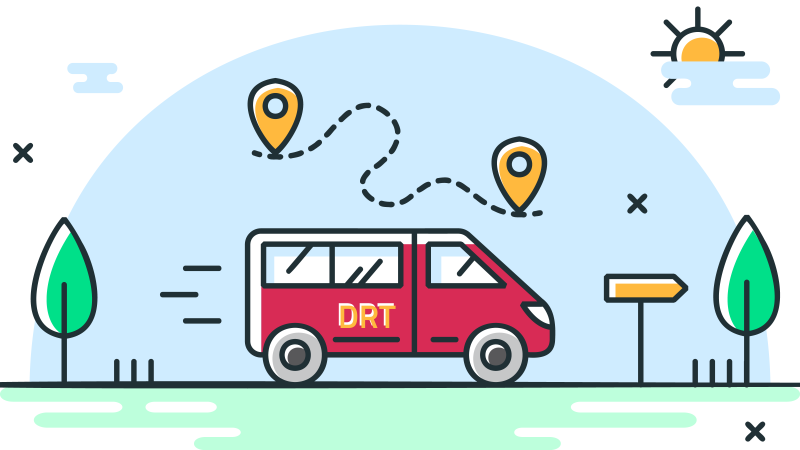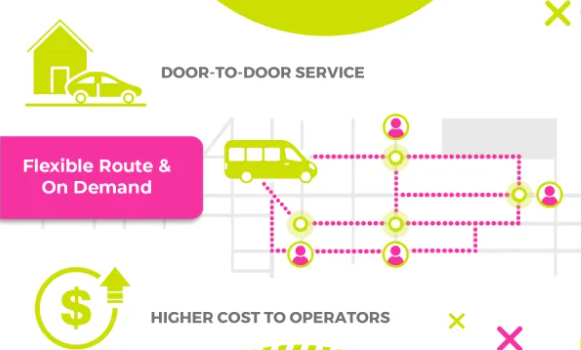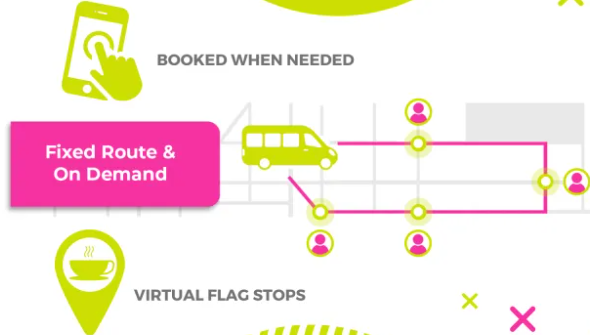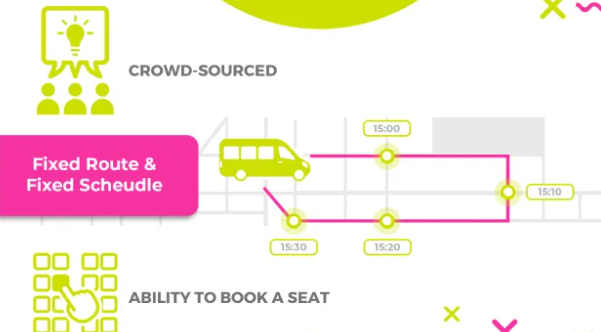Demand-Responsive Transit (DRT) represents a transformative idea in public transportation. Offering flexible routes, shared rides, and advance booking, DRT presents a dynamic shift from conventional fixed-route transit. Yet, the term “DRT” covers a spectrum of interpretations and may be known by other names like microtransit, on-demand transport, or dial-a-ride.

What is DRT?
DRT, or Demand-Responsive Transport, spans a diverse array of transit solutions that deviate from rigid schedules and routes. However, there’s no uniform definition even among official entities. For example, in the UK, the Community Transport Association defines DRT as a passenger-focused transport mode featuring adaptable routes and compact vehicles for shared rides. Conversely, Grosso et al. characterize it as an intermediary between a bus and a taxi, encompassing a broad spectrum of services from community transit to broader service networks.
The Different Types of DRT Services
- Flexible Route On Demand: Services offering flexible routes and on-demand pickups resemble ride-hailing platforms such as Uber and Lyft, seamlessly fetching passengers from their doorstep and delivering them directly to their chosen destination. These services necessitate sizable fleets and pools of drivers to accommodate fluctuating demands.

- Fixed Route & On-Demand:These services provide minimal detours and adhere to specific pickup times, ensuring a more predictable experience for passengers. While pickup times can be adjusted to suit passenger requirements, the routes remain unchanged, guaranteeing passengers reach their destinations without deviation.

- Fixed Route & Fixed Schedule: Hybrid DRT services merge elements of conventional bus services and demand-responsive transport. During peak hours, they function akin to standard public transit, adhering to fixed routes and schedules. Yet, during off-peak times, these services transition to on-demand, adapting schedules and routes according to passenger demand.

